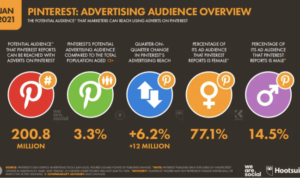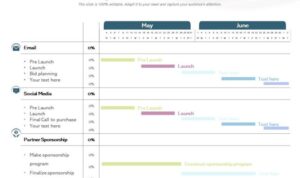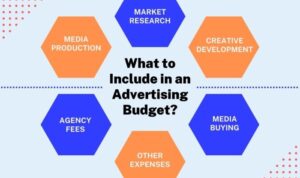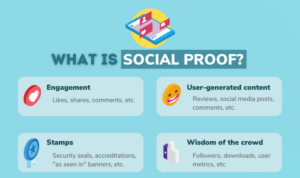B2B Content Marketing Tips dive into the world of business-to-business marketing, showcasing key strategies and techniques to elevate your brand’s reach and impact. From defining B2B content marketing to exploring engaging content creation, this guide is your go-to for success in the digital landscape.
Discover the nuances of targeting the right audience, creating compelling content, leveraging distribution channels, and measuring success effectively to stay ahead in the competitive B2B market.
Introduction to B2B Content Marketing
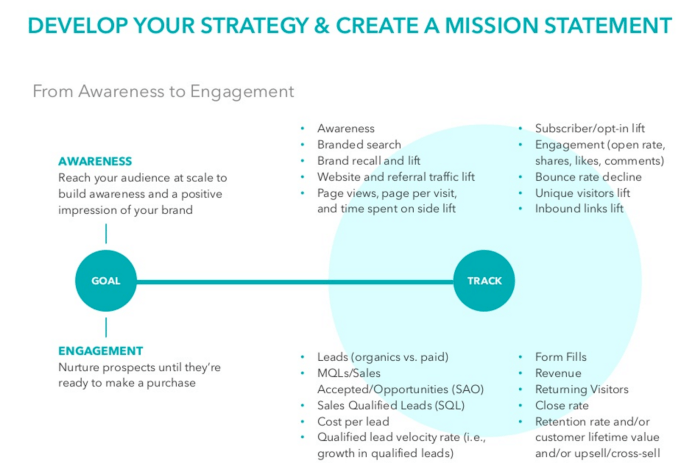
B2B content marketing is a strategic approach used by businesses to create and distribute valuable, relevant, and consistent content to attract and retain a clearly defined audience of other businesses. This type of marketing is crucial in the business world as it helps build brand awareness, establish thought leadership, generate leads, and ultimately drive profitable customer action.
Differences between B2B and B2C Content Marketing
- B2B content marketing focuses on longer sales cycles and building relationships with other businesses, whereas B2C content marketing targets individual consumers with shorter sales cycles.
- In B2B content marketing, the content is more informational, educational, and industry-specific, tailored to meet the needs of businesses in a particular sector.
- B2B content marketing often requires a deeper level of expertise and credibility to resonate with other businesses, compared to the emotional appeal commonly used in B2C content marketing.
Successful B2B Content Marketing Strategies
- Case Studies: Providing real-life examples of how your products or services have helped other businesses can showcase your expertise and build trust.
- Whitepapers and Ebooks: Offering in-depth industry insights and valuable resources can position your business as a thought leader in the field.
- Webinars and Podcasts: Hosting educational events or interviews can engage your audience and provide them with valuable information while showcasing your industry knowledge.
Understanding the Target Audience
In B2B content marketing, understanding the target audience is crucial for creating effective strategies that resonate with potential clients. By identifying the specific needs and preferences of your target audience, you can tailor your content to address their pain points and provide valuable solutions.
Identify the Target Audience
Creating buyer personas is a key step in identifying the target audience for B2B marketing. Buyer personas are fictional representations of your ideal customers, based on market research and real data. By defining the characteristics, goals, challenges, and preferences of your target audience, you can create content that speaks directly to their needs and interests.
- Conduct market research to gather data on your target audience, such as demographics, industry, job title, and pain points.
- Interview existing customers to understand their motivations, challenges, and decision-making process.
- Analyze data from your website, social media, and email marketing to identify trends and preferences among your audience.
By creating detailed buyer personas, you can personalize your content and tailor your messaging to address the specific needs of your target audience.
Aligning Content with Audience Needs
To ensure the success of your B2B content marketing efforts, it is essential to align your content with the needs of your target audience. By understanding their pain points, challenges, and preferences, you can create content that provides valuable insights, solutions, and resources that resonate with your audience.
- Develop content that addresses common pain points and challenges faced by your target audience.
- Create educational resources, such as whitepapers, case studies, and guides, that offer valuable information and solutions to your audience.
- Personalize your messaging and content to speak directly to the needs and interests of your target audience.
Creating Engaging Content: B2B Content Marketing Tips
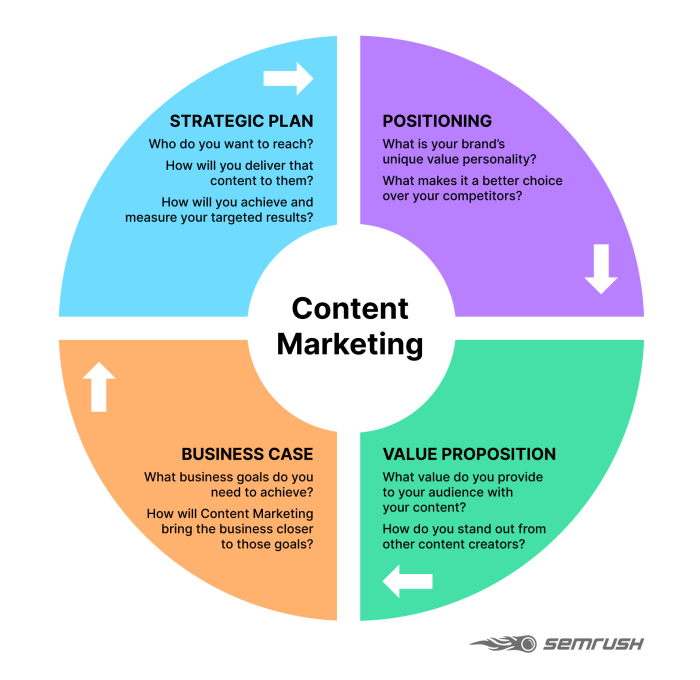
To capture the attention of B2B audiences, it is crucial to create engaging and valuable content that resonates with their needs and interests. By exploring different types of content and incorporating storytelling, businesses can effectively connect with their target audience and drive meaningful engagement.
Types of Content for B2B Marketing
When it comes to B2B marketing, various types of content can be utilized to engage and inform the audience:
- Informative Blog Posts
- Case Studies Highlighting Success Stories
- Whitepapers Offering In-depth Analysis
- Infographics for Visual Representation
- Webinars and Video Content for Interactive Learning
Tips for Creating Engaging Content
Here are some tips to help businesses create compelling content for their B2B audiences:
- Understand the Pain Points of Your Audience and Address Them Directly
- Provide Actionable Insights and Solutions to Industry Challenges
- Utilize Data and Statistics to Support Your Claims
- Optimize Content for to Increase Visibility and Reach
- Engage with Your Audience Through Interactive Elements like Polls and Quizzes
The Role of Storytelling in B2B Content Marketing
Storytelling plays a crucial role in B2B content marketing by humanizing brands and creating emotional connections with the audience. By weaving narratives that resonate with the challenges and successes of your target market, businesses can establish trust, credibility, and loyalty among B2B buyers. Incorporating storytelling elements in case studies, testimonials, and brand narratives can help differentiate your content and leave a lasting impact on your audience.
Distribution Channels for B2B Content
In the world of B2B content marketing, choosing the right distribution channels can make all the difference in reaching your target audience effectively. Let’s explore various distribution channels and compare their effectiveness in distributing B2B content.
Email Marketing, B2B Content Marketing Tips
Email marketing remains a popular choice for distributing B2B content due to its direct and personalized approach. Here are some best practices to maximize reach through email marketing:
- Segment your email list based on industry, job role, or interests to send targeted content.
- Use compelling subject lines and personalized content to increase open rates.
- Incorporate clear Call-to-Actions (CTAs) to drive engagement and conversions.
Social Media
Social media platforms provide a vast landscape for sharing B2B content and engaging with your audience. Here are some tips for leveraging social media channels:
- Identify the platforms where your target audience is most active (e.g., LinkedIn for professionals).
- Create a content calendar to maintain consistency and relevance in your posts.
- Engage with your audience by responding to comments, sharing insights, and joining relevant conversations.
Blogs
Blogging is another effective distribution channel for B2B content, allowing you to showcase thought leadership and industry expertise. Here’s how you can make the most of your B2B blog:
- Produce high-quality, informative content that addresses your audience’s pain points and challenges.
- Optimize your blog posts for to improve visibility and attract organic traffic.
- Promote your blog posts across other channels, such as social media and email, to expand your reach.
Measuring Success in B2B Content Marketing
In the world of B2B content marketing, it’s crucial to measure the success of your campaigns to understand what’s working and what needs improvement. By defining key metrics, leveraging analytics, and using the right tools, you can track and analyze the performance of your content effectively.
Key Metrics for Measuring Success
- Lead Generation: Tracking the number of leads generated through your content can help you gauge its effectiveness in driving conversions.
- Engagement Metrics: Monitoring metrics like time spent on page, bounce rate, and social shares can indicate how engaging your content is to your target audience.
- Conversion Rate: Measuring the percentage of website visitors who take a desired action, such as filling out a form or making a purchase, can show the impact of your content on driving conversions.
- ROI: Calculating the return on investment for your content marketing efforts can help you assess the financial success of your campaigns.
Importance of Analytics and Data
Analytics and data play a critical role in evaluating the performance of your B2B content marketing initiatives. By analyzing data such as website traffic, user behavior, and conversion rates, you can gain valuable insights into what resonates with your audience and adjust your strategy accordingly.
Tools and Techniques for Tracking and Analyzing Results
- Google Analytics: A powerful tool for tracking website traffic, user behavior, and conversion data to measure the performance of your content.
- Marketing Automation Platforms: Platforms like HubSpot or Marketo offer robust analytics capabilities to track the effectiveness of your content marketing campaigns.
- Social Media Analytics: Platforms like Facebook Insights or LinkedIn Analytics provide data on engagement, reach, and audience demographics to evaluate the impact of your social media content.
- A/B Testing: Experimenting with different content variations and analyzing the results can help you identify the most effective strategies for your target audience.

